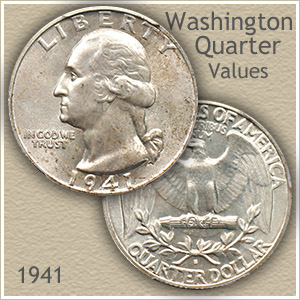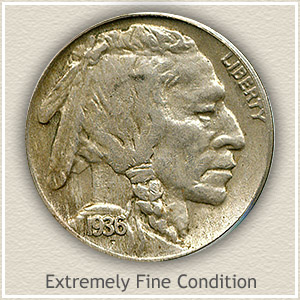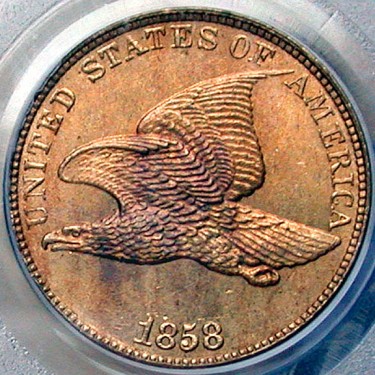Flying Eagle Cent
Flying Eagle cents have proved enormously popular over the decades, beginning with the pattern issue of 1856. It is unclear exactly how many 1856 cents were struck, but the best estimates fall in the range of 800 to as many as 1,500 pieces. Both proofs and business strikes were made, as well as originals and restrikes.

Flying Eagle Cents For Sale
The Flying Eagle coin series was minted for circulation out of the need to reduce the cost of production of the larger US one-cent denomination. Since 1793, the one-cent coins were struck in copper with an approximate weight range from 10.93 grams to around 13.48 grams and diameter range from 26.5 mm to 28.5 mm. Coins of this size and weight proved to be costly in the long run and more so when the price of copper went up. Moreover, the Liberty bust designs in this coin series received a lot of criticisms from the general public. The US Mint tried to please the public by changing the designs, making a few alterations or additions here and there. But eventually, they gave in to the public and to the rising cost of production and thought of a new coin.
- The Flying Eagle was the first attempt at creating a small cent. The previous cent piece, the Braided Hair Liberty Head cent was almost the size of the modern half dollar, but by 1856, these bulky and expensive coins had become unpopular.
- 1858 P Flying Eagle Cent Large Letters: Coin Value Prices, Price Chart, Coin Photos, Mintage Figures, Coin Melt Value, Metal Composition, Mint Mark Location, Statistics & Facts. Buy & Sell This Coin. This page also shows coins listed for sale so you can buy and sell.

Several propositions were made regarding the metal composition to be used in the new coinage. Bronze, copper, nickel, silver, and zinc were the suggested metals for the metal combination. German silver, which is composed of copper, nickel, and zinc, was considered. Bullion was another suggestion, which is made up of 10% silver and 90% copper. Until finally, a copper-nickel combination was chosen by James Booth in 1856 and the Flying Eagle Cent was born.


The first Flying Eagle Cents were struck in 1856 as pattern coins to be presented to the Congress for approval. There were about 2,000 1856 Flying Eagle minted both in proof format and circulation strike. For some reason, these coins found their way in circulation and people thought that they are regular issues in limited edition. Mintage for circulation purposes was struck in 1857 and 1858, with a total of 17,450,000 and 24,600,00 coins respectively. These were known as the 1857 Flying Eagle Cent issue and 1858 Flying Eagle Cent issue. During these years, the Flying Eagle coins dated 1856 were also re-struck to produce more 1856 Flying Eagle Cents.
Mintage Flying Eagle Cents

All these Flying Eagle Cent issues bear on its obverse side the image of a flying American Eagle designed by Christian Gobrecht. The reverse side of the coin is adorned with a wreath of agricultural crops corn, cotton, tobacco leaves, and wheat and the words One Cent inside. The overall design was made by James Barton Longacre. The Flying Eagle design had quite an interesting background history. It was modeled after a bald American Eagle that took shelter and lived in the Philadelphia Mint for six years until he died in an accident with some machinery in the building. People grew fond of the bird and named him Peter. His body was preserved by Taxidermist and put on display at the Mint, where he remains up to this day.